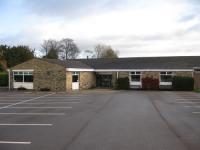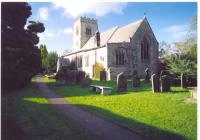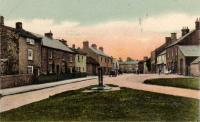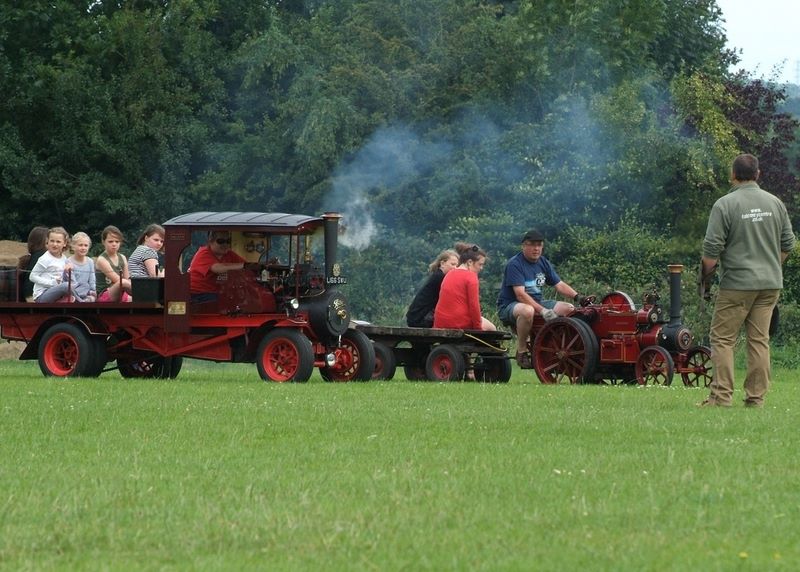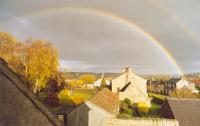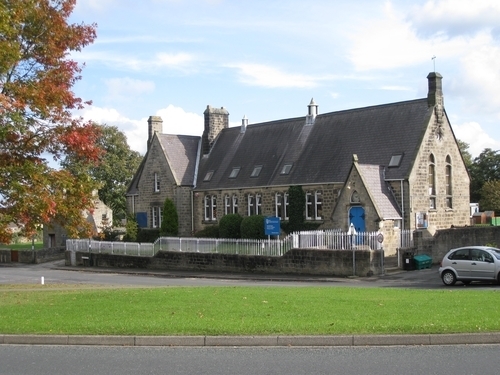Recent articles
© DT Online 2010 - 2025
| Village RoomThe Village Room began its life as a purpose-built reading room constructed in stone with a boarded roof covered in slate and with its interior beams exposed in a vaulted roof. It opened to the public in August 1890 as evidenced by the stone plaque visible in the next photograph. Before the construction of the Room the site was occupied by a cottage purchased by George Bell who paid the sum of £40 for his acquisition in September 1879. We have a copy of the plan attached to his conveyance from which it can be seen that Mr Bell (described as a shoemaker) already owned property on the east and south sides of the cottage.  In August 1888 Mr Bell sold the site for £50 to Letitia Wright of Hollins Hall. Mrs Wright was the widow of John Field Wright and she acquired the property for the purpose of creating a memorial to her late husband. Mrs Wright was a leading light in the local Temperance movement of the late 19th century (see the entry for the Lamb Inn) and she was concerned that the public building she now created in place of the cottage should encourage sober habits.
The new building (clearly a replacement for the old thatched cottage) was opened as a reading room where male villagers could attend to read newspapers and other periodicals at a cost of one (old) penny per person. Later deeds were to describe the premises as a "Mission Room or Institute" and there seems little doubt that the "Mission" was that of the Temperance movement. Newspaper reports of the time reveal how active Mrs Wright was in the crusade against alcohol - she was present at a meeting in March 1888 to discuss the formation of a "Total Abstinence Union" for Hampsthwaite and in April was described as its President. Membership of the Union reached 100 within a matter of weeks.
The new building remained in Mrs Wright’s ownership (and, no doubt, control) until her death in March 1902 when it passed to her son Thomas Rowland Drake Wright. He retained ownership until October 1924 when he conveyed the property to trustees who included (ex officio) the Vicar of Hampsthwaite. The conveyance required the trustees to use the premises for the purpose of a Village Room or Institute “for the use of men and boys and otherwise for the benefit of the inhabitants of Hampsthwaite”. The trustees were empowered to make rules for the management of the Room “but it shall be a permanent rule that no alcoholic drinks or gambling shall be permitted on the premises”.
Over the years the use of the Room has changed. When the building's use as a reading room became outdated, it was turned into a village club room and a three-quarter size snooker table was installed. A later, full-size replacement is now in use at the Memorial Hall. In the late 1950's the building fell into decline in circumstances described by Ron Backhouse . . . "The decline in the use of the Village Room can be attributed to the arrival of the new Memorial Hall, lack of facilities in the Room (no water, toilet, drains, lighting or heating), an absence of funds, no committee and no insurance! The Parish Council became involved in the mid 1960's when it was advised that gas and insurance bills for the building were outstanding and, after making enquiries, discovered the original trustees had died or left the area. The Council arranged for the holding of a meeting with a view to the appointment of new trustees. Only five persons attended - one declined to stand for appointment and the remaining four were duly appointed [three of them - Illingworth, Forrest and myself - are shown in this cartoon dating from that time . . .  . . . the fourth was Eric Lundell! Having gained access to the room we were appalled to see broken windows, rubbish in the room, pigeons roosting and their droppings all over the covered snooker table, the rusting cast-iron stove and the plywood seats around the walls infested with woodworm. We held a meeting later that week at the home of Frank Forrest. He became chairman and we then discussed what action to take to secure the Room with new locks and clear it of rubbish. A meeting of residents was arranged at the school to seek opinions on future action and some 40 or 50 people attended. Vocal newcomers to the village wanted to see the Room sold and proceeds given to the new Memorial Hall (the Room was valued at about £500) but in the days following the meeting it became clear that long-standing villagers preferred to keep and restore the Room and that was the course we decided upon and the Room was registered as a charity. Early in the new year the Memorial Hall was destroyed by fire and the need to bring the Room back into use became urgent. We dismantled the snooker table (my!-how heavy the slate bed was!) and stored it in John Illingworth's garage until it was later housed in the new Memorial Hall. John also provided pick-up trucks and tipping facilities for the rubbish removed. Eric Lundell decorated the Room using his own scaffolding and ladders and also provided the paint, etc., free of charge. I replaced broken windows and obtained fluorescent lights, cables and switches and carried out the installation of the new lighting. Frank obtained quotations and negotiated with builders and the Gas Board (who gave a replacement heater free of charge - Ray Howard wired up the time switch). Simpson Bros. installed the water from the main in the grass verge with a stop tap. They also supplied the kitchen sink unit and waste for £80 and built two toilets on the old coal-store site for £190. Frank financed the purchase of lino which was laid free of charge by Tony Marshall. Many other villagers also gave of their time free of charge. From the Memorial Hall fire we salvaged Formica-topped tables and forms all from the school childrens' dining area. This enabled Eric Lundell to hold his famous weekly Whist Drive. Invitations were sent out to all village organisations inviting them to send a member to sit on a new management committee. The Trustees were adamant that we were not in competition with the new Memorial Hall but were complementary to it. The Room was reopened on the 19th November 1966 by the Chairman of the Parish Council Mr Frank Simpson and was rededicated by the Vicar, the Reverend W. Suthern. The first event was a Christmas Fayre which received tremendous support. In later years members of the Wednesday Group joined the management committee and the Group became regular users of the Room. Famous for fund-raising, they offered to make the Village Room their chosen charity of the year provided they could choose new furnishings. This was agreed (how could we refuse?), resulting in new carpet and curtains, new chairs and tables and a fitted kitchen with cooking facilities. We now also have a Combi boiler with easy controls providing central heating and hot water." Now the Room is a regular venue for meetings including the Parish Council, the Village Society Committee and the Wednesday Group. In Book One (Villager's Reminiscences) we read . . . "The men went there to read their daily papers and to play dominoes. Monday evening was 'penny reading night', when we paid a penny to hear someone reading or playing the accordion. The young men would entertain as well and give a reading from a book or an old magazine. It was a happy evening, the highlight of the week" and "In World War II soldiers were billeted in the Village Room and a bridge was built across the beck to the toilets beyond". "During World War II, I joined the Girls' Training Corps. We trained in the Village Room and paraded to church in blue uniforms" and "We could not afford a daily paper so he (my husband) used to go to the Village Room, where there was an open fire, and read the newspaper which was delivered there." ". . . the Village Room - or Reading Room, as it was called at that time - had a billiard table, which took up much of the floor area, so it could be used only for small whist drives." |






